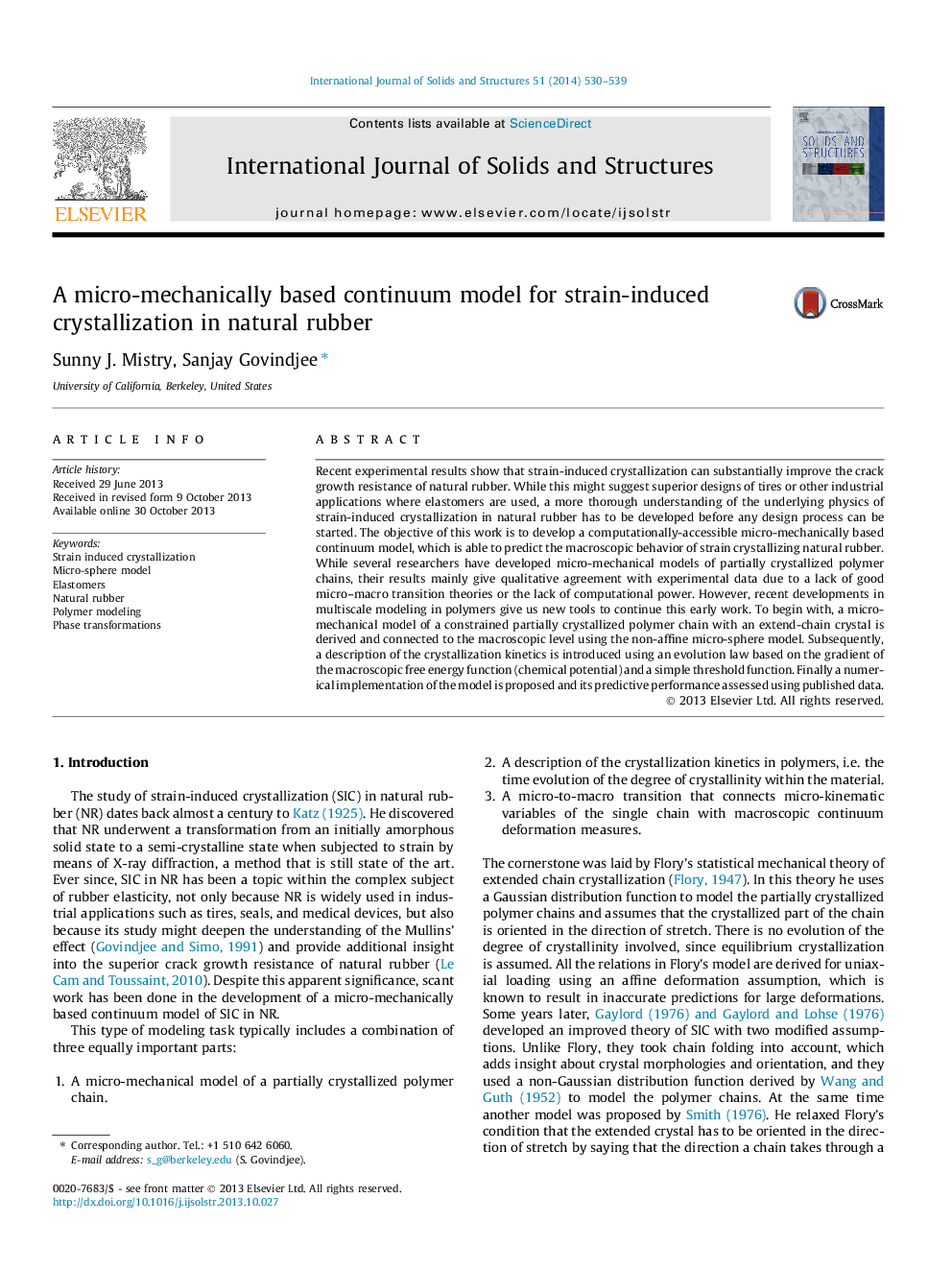| Article ID | Journal | Published Year | Pages | File Type |
|---|---|---|---|---|
| 277852 | International Journal of Solids and Structures | 2014 | 10 Pages |
Recent experimental results show that strain-induced crystallization can substantially improve the crack growth resistance of natural rubber. While this might suggest superior designs of tires or other industrial applications where elastomers are used, a more thorough understanding of the underlying physics of strain-induced crystallization in natural rubber has to be developed before any design process can be started. The objective of this work is to develop a computationally-accessible micro-mechanically based continuum model, which is able to predict the macroscopic behavior of strain crystallizing natural rubber. While several researchers have developed micro-mechanical models of partially crystallized polymer chains, their results mainly give qualitative agreement with experimental data due to a lack of good micro–macro transition theories or the lack of computational power. However, recent developments in multiscale modeling in polymers give us new tools to continue this early work. To begin with, a micro-mechanical model of a constrained partially crystallized polymer chain with an extend-chain crystal is derived and connected to the macroscopic level using the non-affine micro-sphere model. Subsequently, a description of the crystallization kinetics is introduced using an evolution law based on the gradient of the macroscopic free energy function (chemical potential) and a simple threshold function. Finally a numerical implementation of the model is proposed and its predictive performance assessed using published data.
